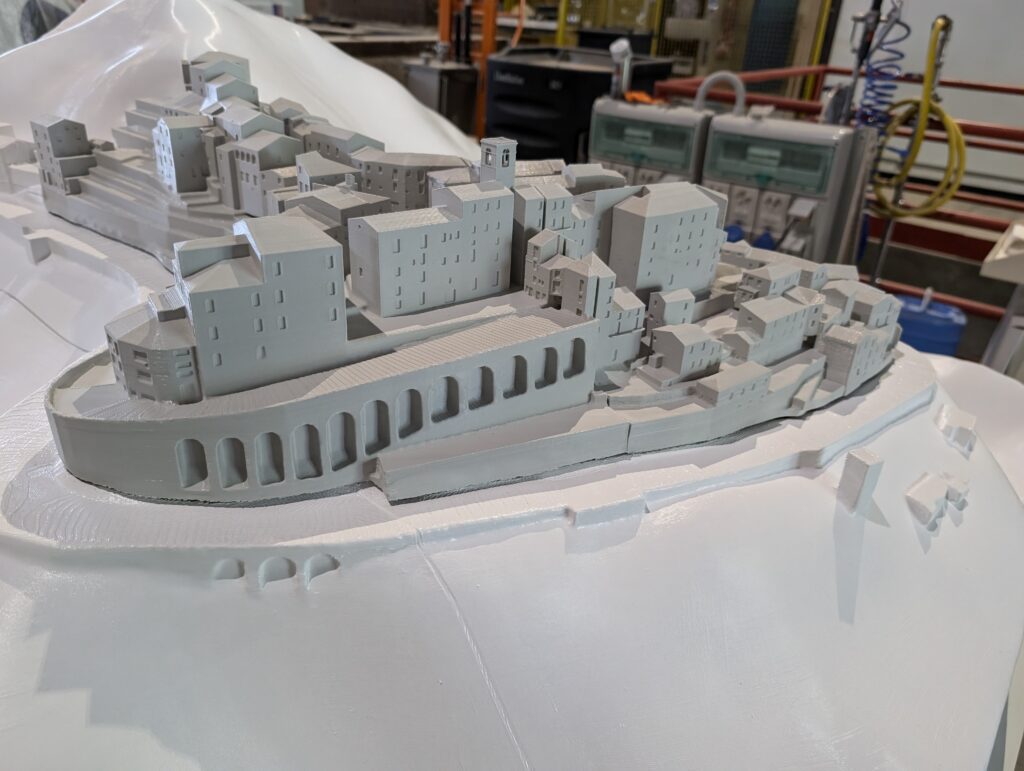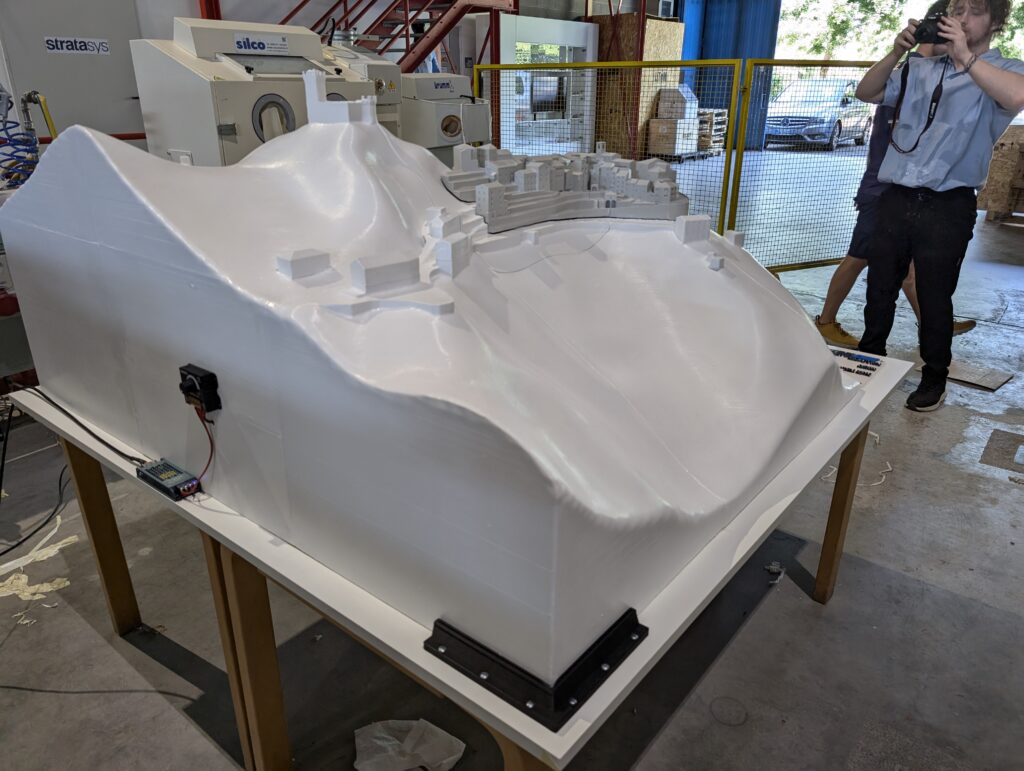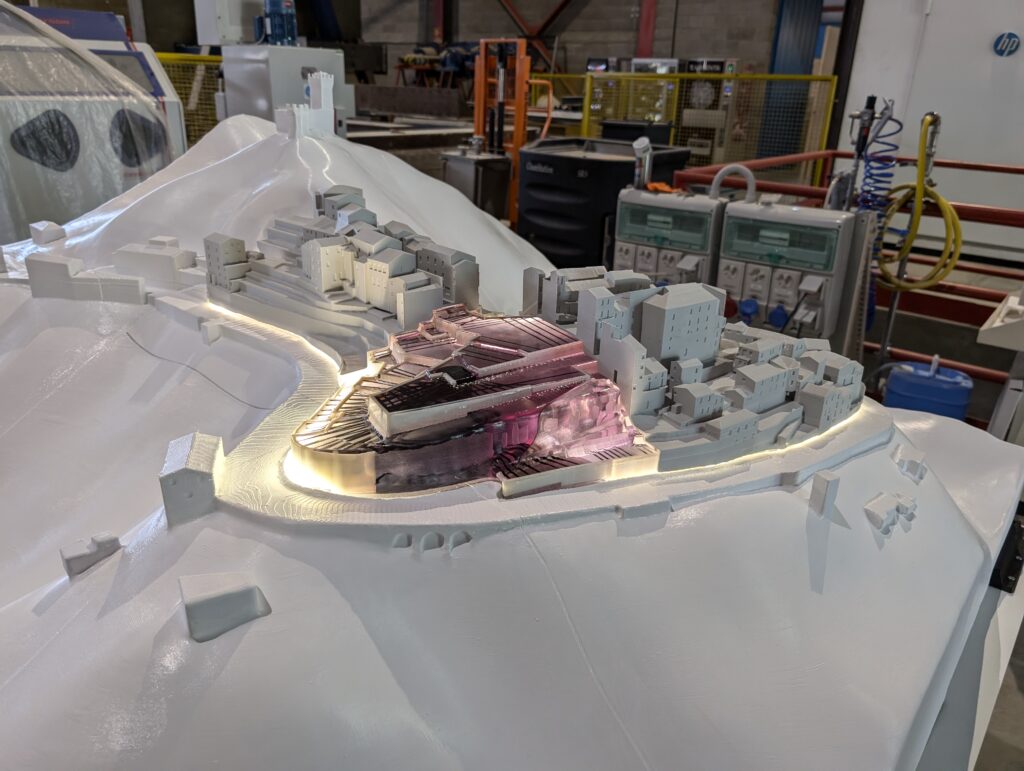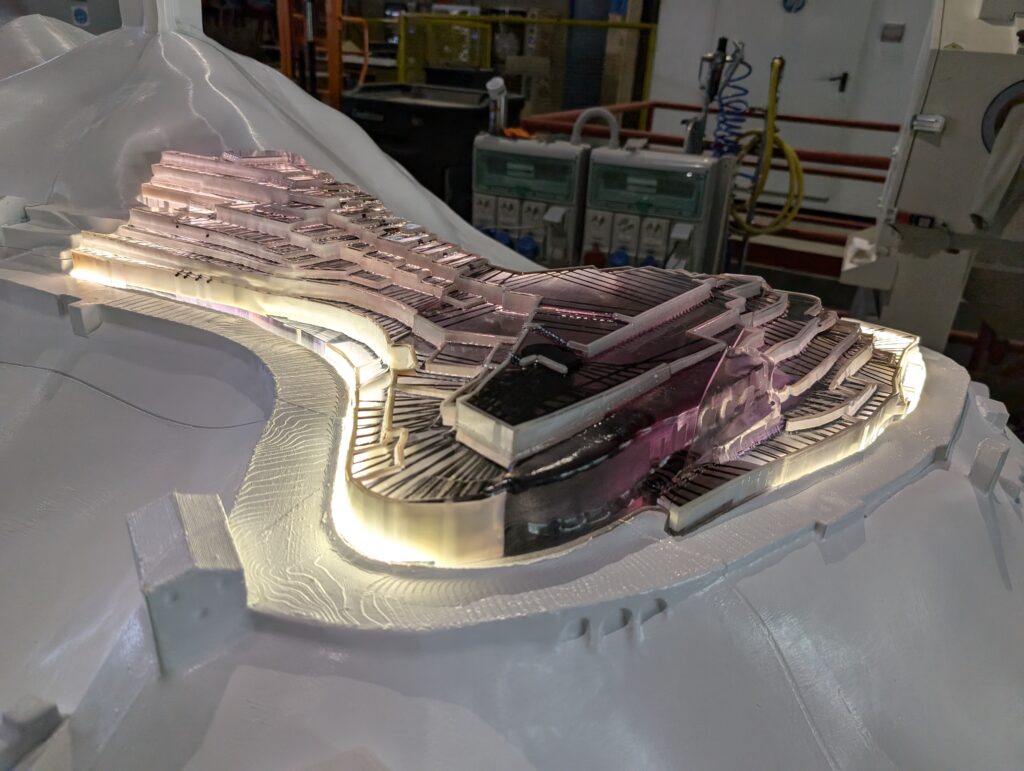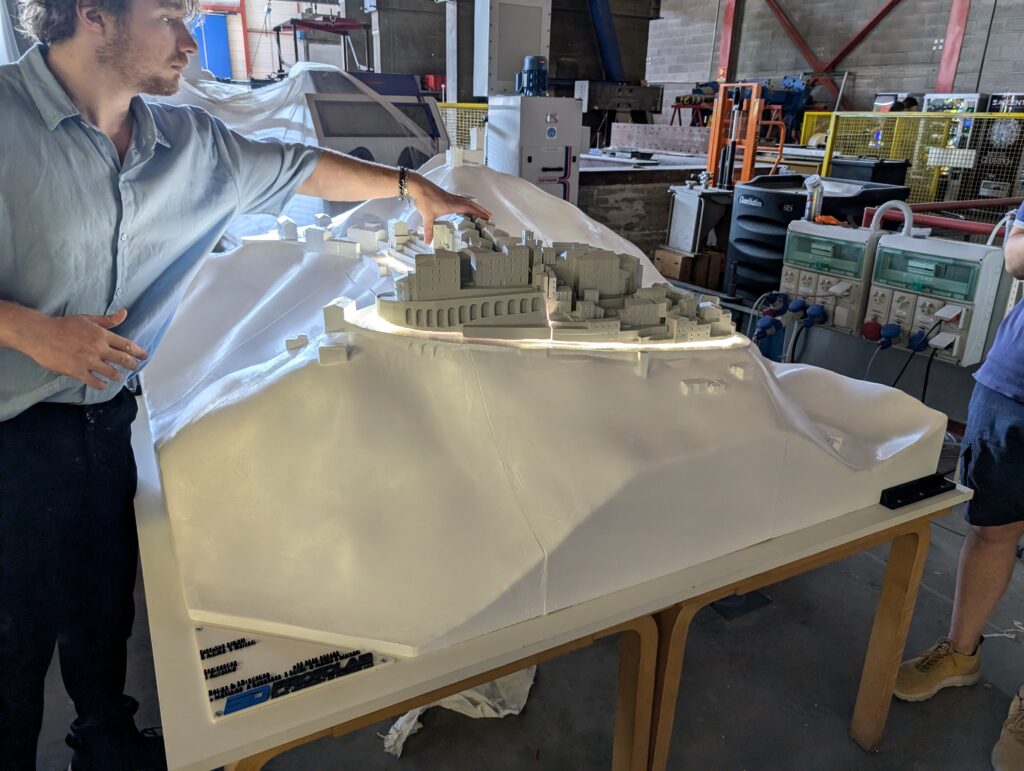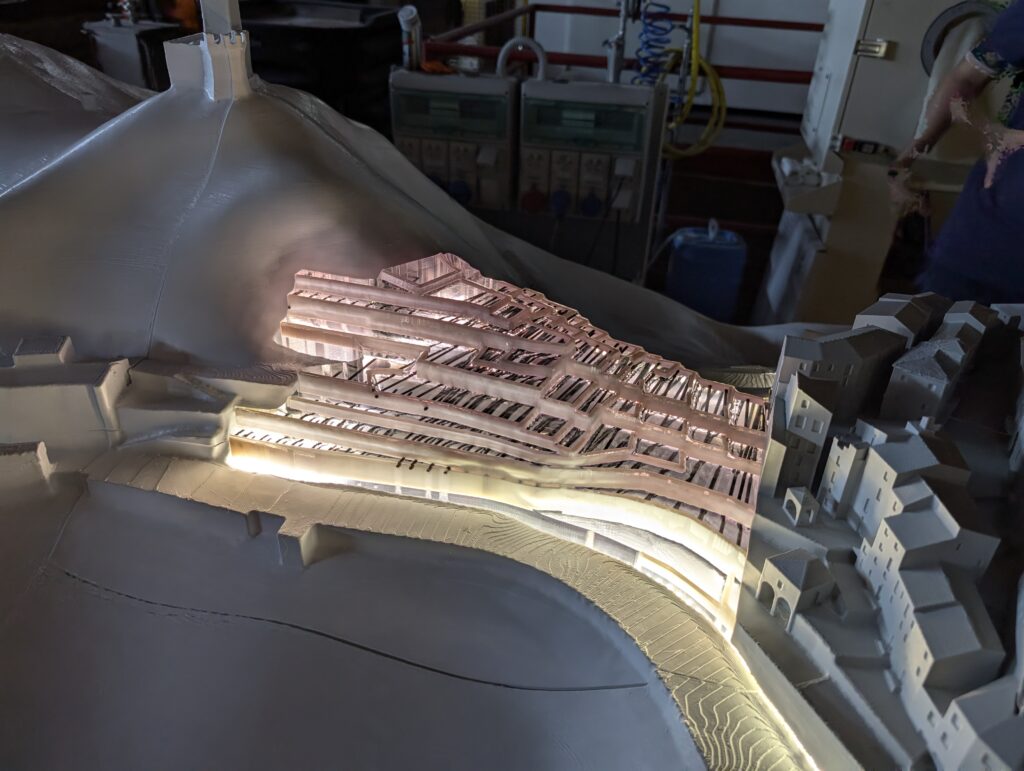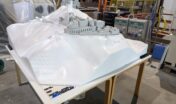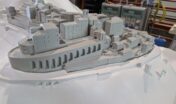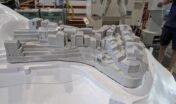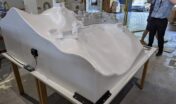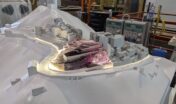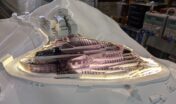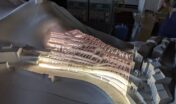New project to improve earthquake safety and the reconstruction of arquata, led and funded by the Marche Region. This initiative integrates advanced solutions and important collaboration.
The reconstruction project of Arquata del Tronto’s has been approved, marking one of Italy’s most complex and innovative reconstruction efforts. The project is led by regione Marche with technical support from Eucentre and Studio Calvi. Senator Castelli is overseeing this important project as the Extraordinary Commissioner for Reconstruction and Earthquake Repair.
Ensure the safety of Arquata del Tronto’s underground and then rebuild the village is what will happen in simple terms. This is the symbolic place of the earthquake that suffered the most devastating consequences of the tragedy. After demolishing the remaining buildings in the historic center, the Services Conference approved the technical-economic feasibility project for “Realization of stabilization and support works for subsequent construction of public and private aggregates and infrastructures.” The project drafted by the Special Reconstruction Office of the Marche Region, totaling €71 million, prioritizes safety and cutting-edge, innovative solutions to ensure a protection from simsmic event for the village. Simultaneously, it aims to implement interventions that respect the architectural, historical, and environmental characteristics of the area, ensuring sustainable architecture and energy efficiency.
This project involves extensive collaboration among various professional figures:
The Marche Region initiated and funded the project, driven by a commitment to enhance public safety and infrastructure resilience. Their leadership ensured that the project had the necessary resources and strategic direction to make a significant impact.
Studio Calvi was brought into the collaboration due to its renowned expertise in seismic engineering. Calvi’s extensive experience in both international projects and specialized consultancy made Studio Calvi an ideal partner for developing cutting-edge seismic design solutions.
Eucentre co-founded by Professor Calvi, was included for its advanced resources and capabilities in seismic simulation and research. The center’s deep knowledge and technological support were crucial for evaluating and refining the seismic safety measures proposed in the project.
Protolab at the University of Pavia was engaged to provide its expertise in prototyping and model creation. By developing detailed scaled models, Protolab facilitated the visualization and testing of design concepts.




The model played a crucial role in effectively presenting the project to prominent figures such as President Mattarella and Minister Musumeci. Its detailed simulations and visualizations provided a clear and compelling overview of the project’s objectives, methods, and expected outcomes. This visual presentation effectively illustrated the project’s impact on improving seismic safety in the Marche region, showcasing innovative strategies and emphasizing the collaborative efforts .
By using the model, the project team could articulate complex ideas succinctly, ensuring that key decision-makers fully understood and appreciated the initiative’s potential impact and importance.
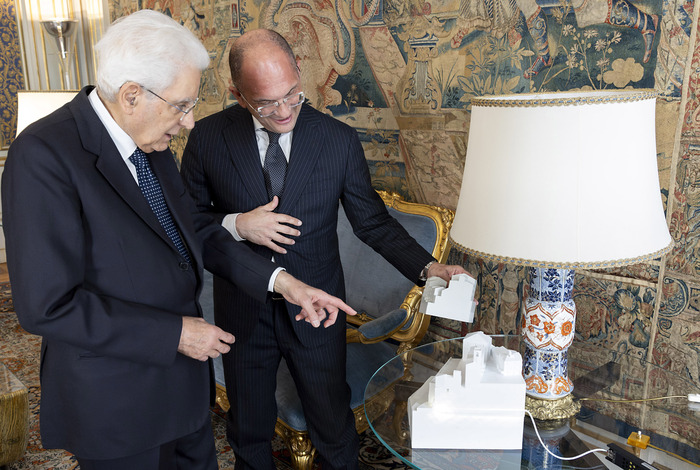
President Sergio Mattarella received Senator Guido Castelli, the extraordinary commissioner for post-earthquake reconstruction in central Italy. In the meeting, Senator Castelli presented President Mattarella with the reconstruction project for Arquata, using an initial prototype of the model created by Protolab at the University of Pavia.

At the WCEE Conference 2024, the prototype created by Protolab at the University of Pavia takes center stage, showcasing essential aspects of the project, including a presentation attended by Minister Musumeci.
Arquata Earthquake
Following the tragic 2016 earthquake that claimed more than 40 lives and caused a significant landslide of Arquata del Tronto’s mountain into the valley, the urgent necessity for strong seismic reinforcements became undeniable.
This initiative focuses on stabilizing the entire hillside through the construction of two underground reinforced concrete wells.
From these wells, a network of 328 anchors will span a total of 12,970 linear meters, fortifying the hill and ensuring the safety of the village.
Design
The model was created starting from the design files of the actual project from the studio, faithfully reproducing the real-life layout of the now destroyed Arquata, all to scale.
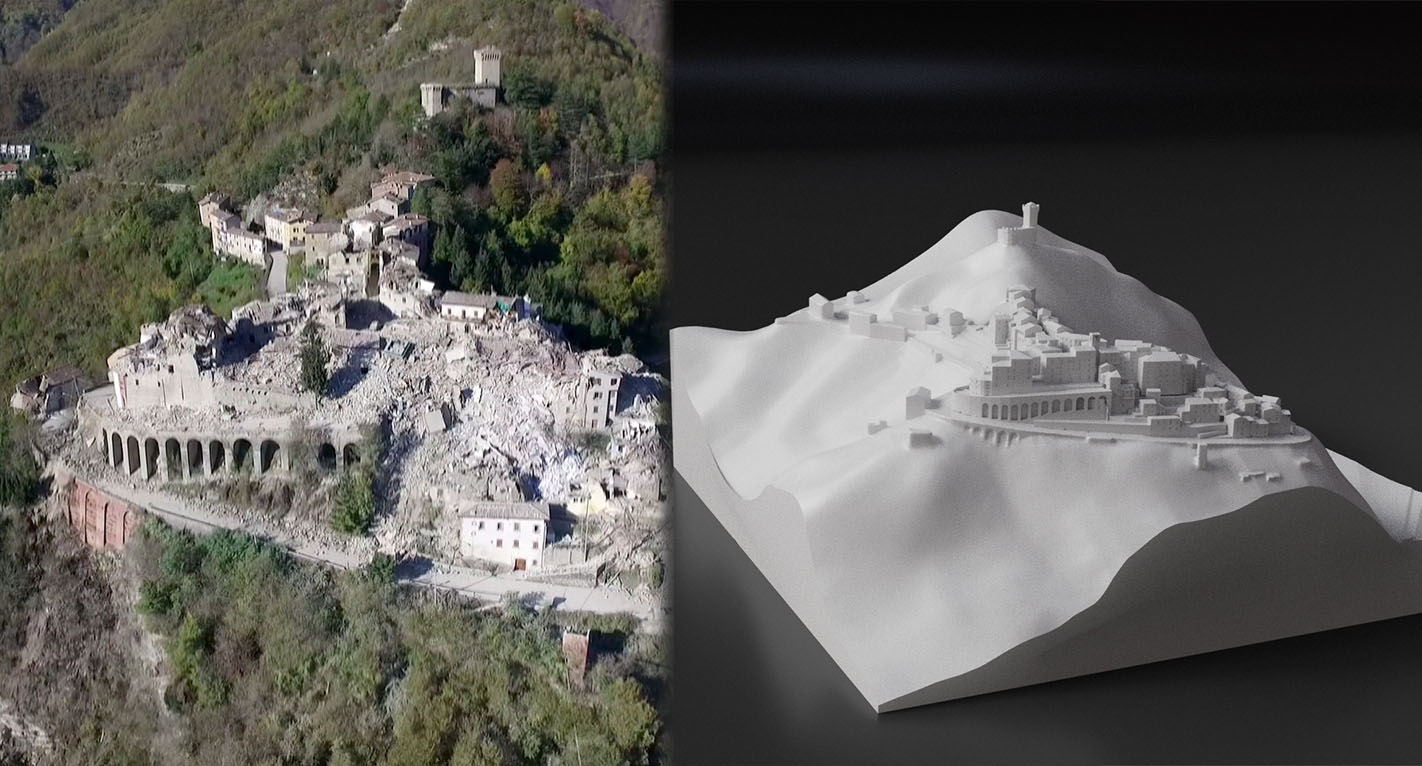
Through 3D design using various software, we transformed and realized the model for real-world application. Surface files were converted into detailed thicknesses, interlocking parts, and compartments for the model. The hill was printed in 14 different pieces, each with a dedicated cavity to hold the subsoil of Arquata and the well project. The cover was created with a thickness of 3 mm, divided into three different parts. Thanks to 3D printing, the model is highly detailed, capturing even the smallest features such as staircases, doors, and windows.
The Hill (1.50m x 1.50m x 70cm) PLA
- The hill was printed in 14 different pieces, with dedicated cavities to hold the subsoil of Arquata and the well project. This modular approach ensured accurate alignment and structural integrity.
- Each piece was designed to be glued together.
- Include through-holes for LED lights, allowing internal illumination of the model.
- Each piece of the hill was printed using PLA material, chosen for its durability and precision in capturing fine details.
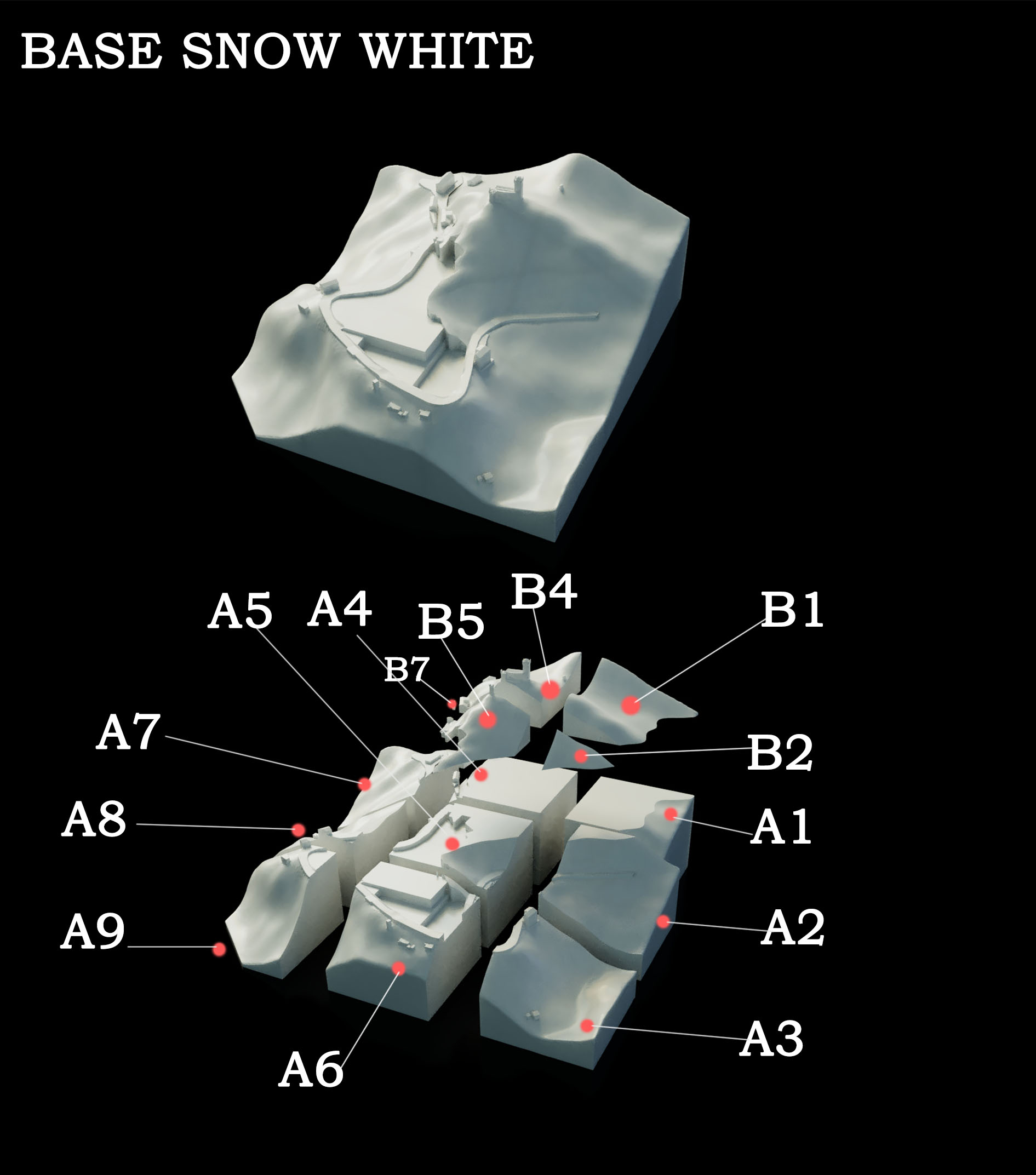
The cover
- The cover represents the destroyed city of Arquata.
- We designed the cover to separate the city from the hill, creating a 3 mm thick cover that allows for the visualization of the subsoil and the well project.
- This cover, divided into three parts, can be removed and replaced easily, enabling clear and comprehensive viewing of the project’s underlying features.
- The 3D printed cover was made in Grey PLA.
- The design for the cover, fits seamlessly over the transparent section while resting securely on the hill..

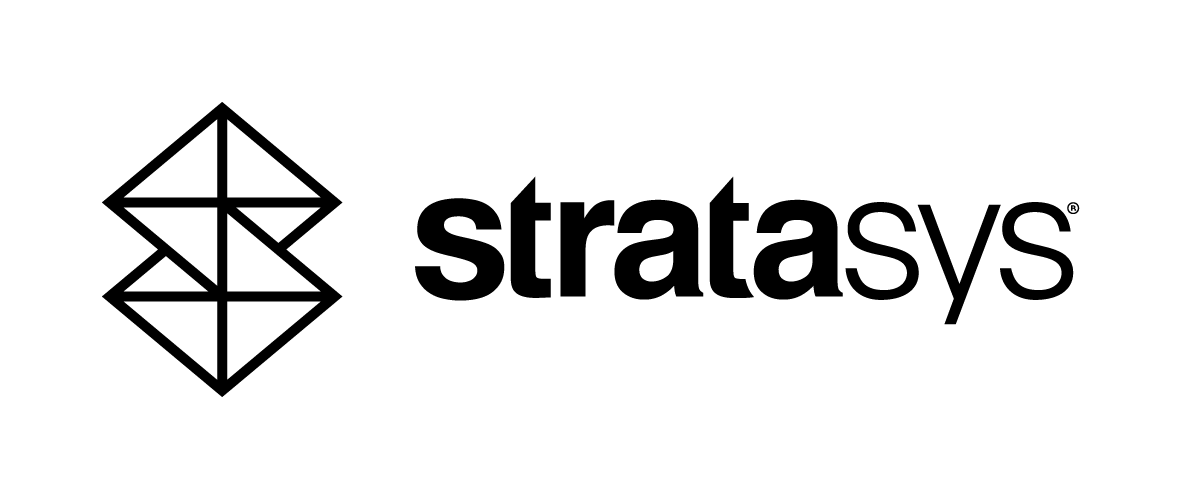
PolyJet technology by Stratasys is a 3D printing method that uses UV light to polumerize layers of liquid photopolymer, allowing for high precision and detailed prints. It can print multiple materials and colors simultaneously, including transparent materials.
We utilized PolyJet’s capability to print transparent resin combined with colored materials. This allowed us to create the terrain with clear resin while embedding colors to show the anchors and wells inside. This method provided a detailed and comprehensive view of the project’s structure and layout.
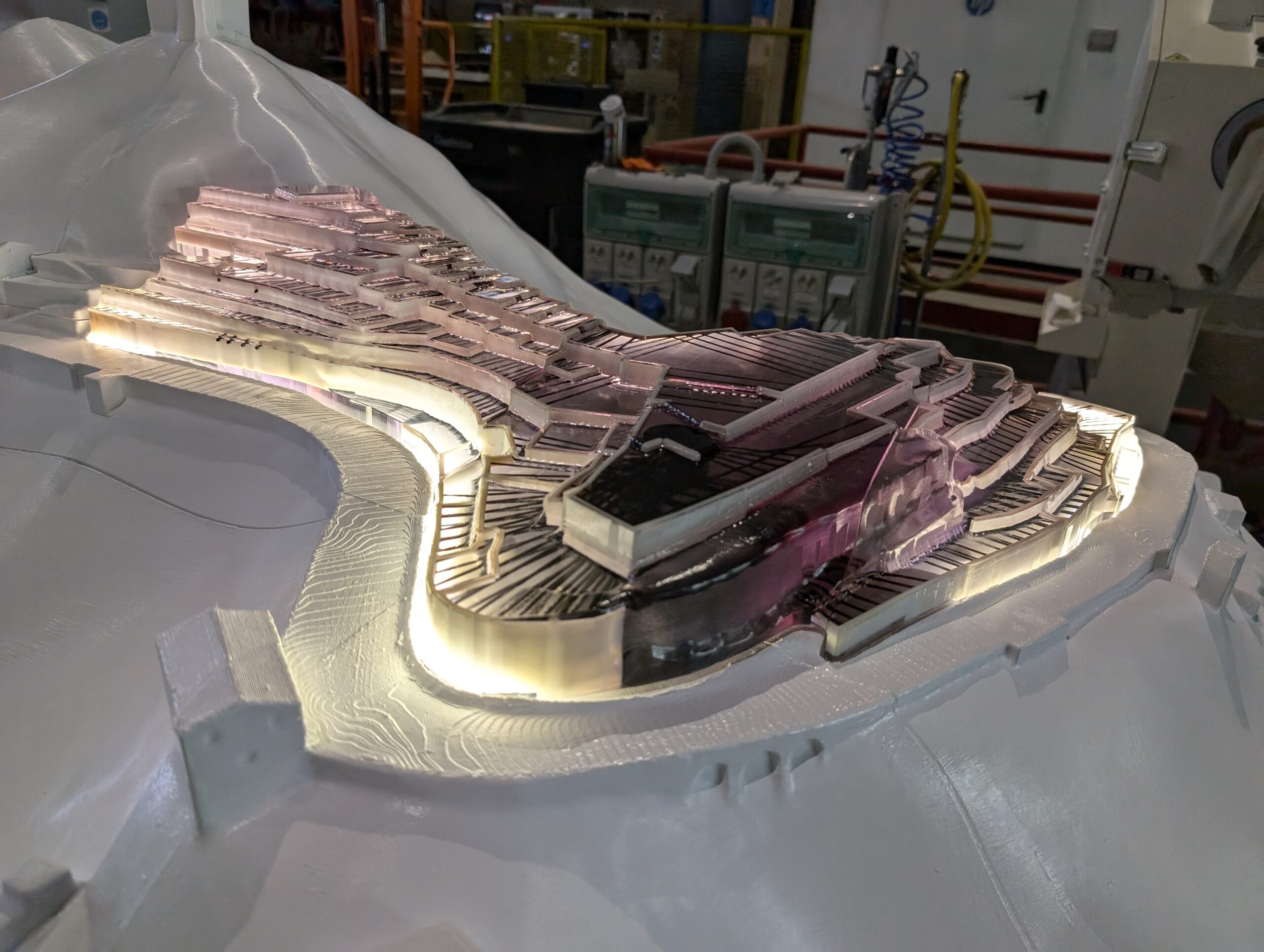
The model serves as a crucial tool in the presentation, evaluation, organization, and visualization of the reconstruction project compared to traditional scaled drawings or technical designs. Its three-dimensional representation provides a tangible and immersive experience. This visual aid facilitates clearer communication of complex ideas and enhances decision-making processes by offering a comprehensive view of how the reconstructed Arquata del Tronto will integrate with its historical and geographical contex



